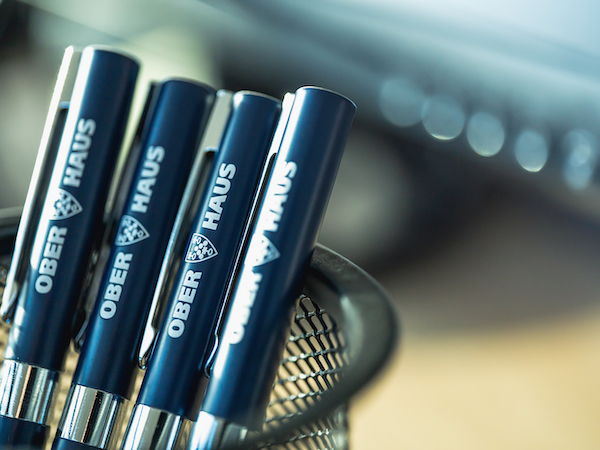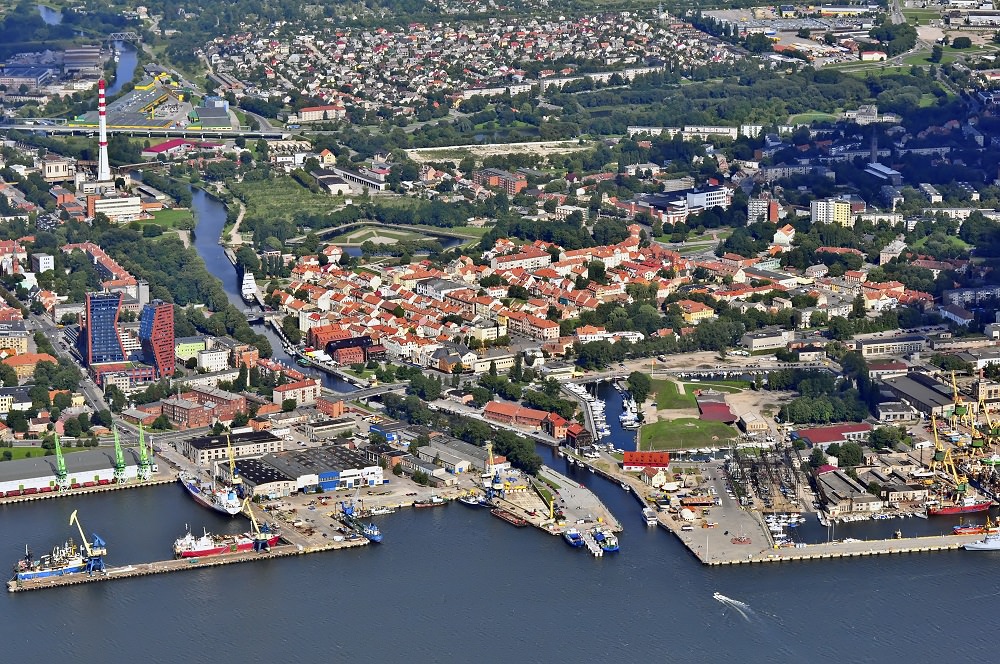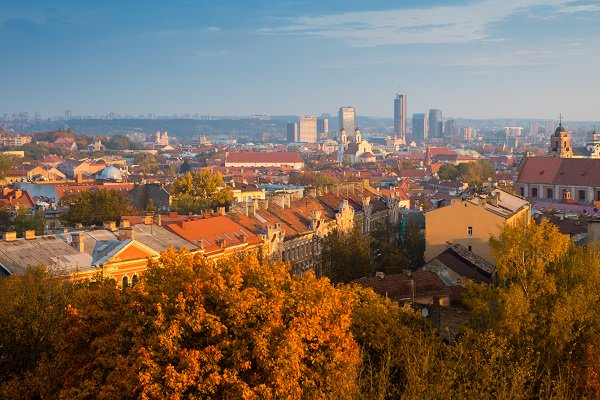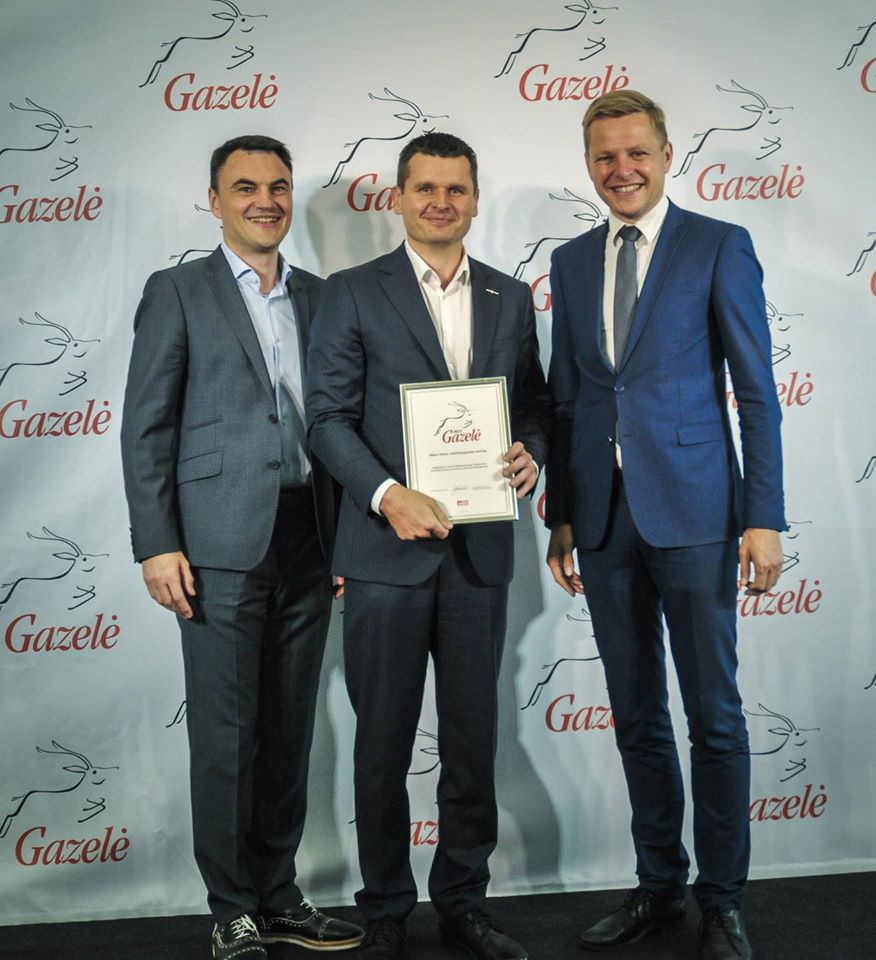The Ober-Haus Lithuanian apartment price index (OHBI), which records changes in apartment prices in the five major Lithuanian cities (Vilnius, Kaunas, Klaipėda, Šiauliai and Panevėžys), increased by 0.3% in October 2016. The annual apartment price growth in the major cities of Lithuania was 5.0% (the annual apartment price growth in September 2016 was 4.8%).
In October 2016 apartment prices in the capital grew 0.3% with the average price per square meter reaching EUR 1,403 (+4 EUR/sqm). During a year the prices of apartments in Vilnius increased by 6.1% and since the last lowest price level recorded in May 2010 prices have increased by 21.5% (+249 EUR/sqm). Apartment prices in Kaunas, Klaipėda and Šiauliai in October grew by 0.5%, 0.3% and 0.1% respectively with the average price per square meter reaching EUR 980 (+5 EUR/sqm), EUR 1.007 (+3 EUR/sqm) and EUR 591 (+1 EUR/sqm).
In Panevėžys apartment prices remained stable and were the same as in last month – 552 EUR/sqm. In the past 12 months, the prices of apartments grew in all major cities: 6.1% in Vilnius, 4.1% in Kaunas, 2.4% in Klaipėda, 5.2% in Šiauliai and 4.1% in Panevėžys.
“Statistical data for the past twelve months shows that the prices of both new and old apartments in the main Lithuanian cities continue to grow. Although the changes in the prices in the different housing segments are similar, certain differences can also be individuated. Analysis of the most active main cities shows that in Vilnius the prices of old apartments grew the most, while in Kaunas and Klaipėda the growth was recorded for new apartments. Over the past twelve months, old apartments in Vilnius have become 7.6% more expensive, while new apartments have become 5.5% more expensive. In Kaunas and Klaipėda over the same period, the prices of old apartments increased, respectively, by 4.0% and 2.1% and the prices of new apartments increased, respectively, by 5.1% and 2.8%. The supply of new apartments in Vilnius, which has been rapidly increasing in the past three years, has also resulted in a more moderate growth in prices of new apartments, whereas in Kaunas and Klaipėda the growth of the number of new apartments offered for sale is slower and the competition among developers is not as fierce as in Vilnius,” says Saulius Vagonis, Head of Valuation & Analysis at Ober-Haus.
Lithuanian Apartment Price Index, October 2016
Lithuanians increasingly take out mortgage loans, and loan volumes continue to grow. According to data from the European Central Bank, mortgage loans for EUR 775 million were provided in Lithuania in the first eight months of 2016, which is a 12% increase compared to the same period last year. In 2015–2016, mortgage loans for an average of over EUR 90 million were provided per month, which is nearly double compared to this figure in the time period from 2010 to 2014.
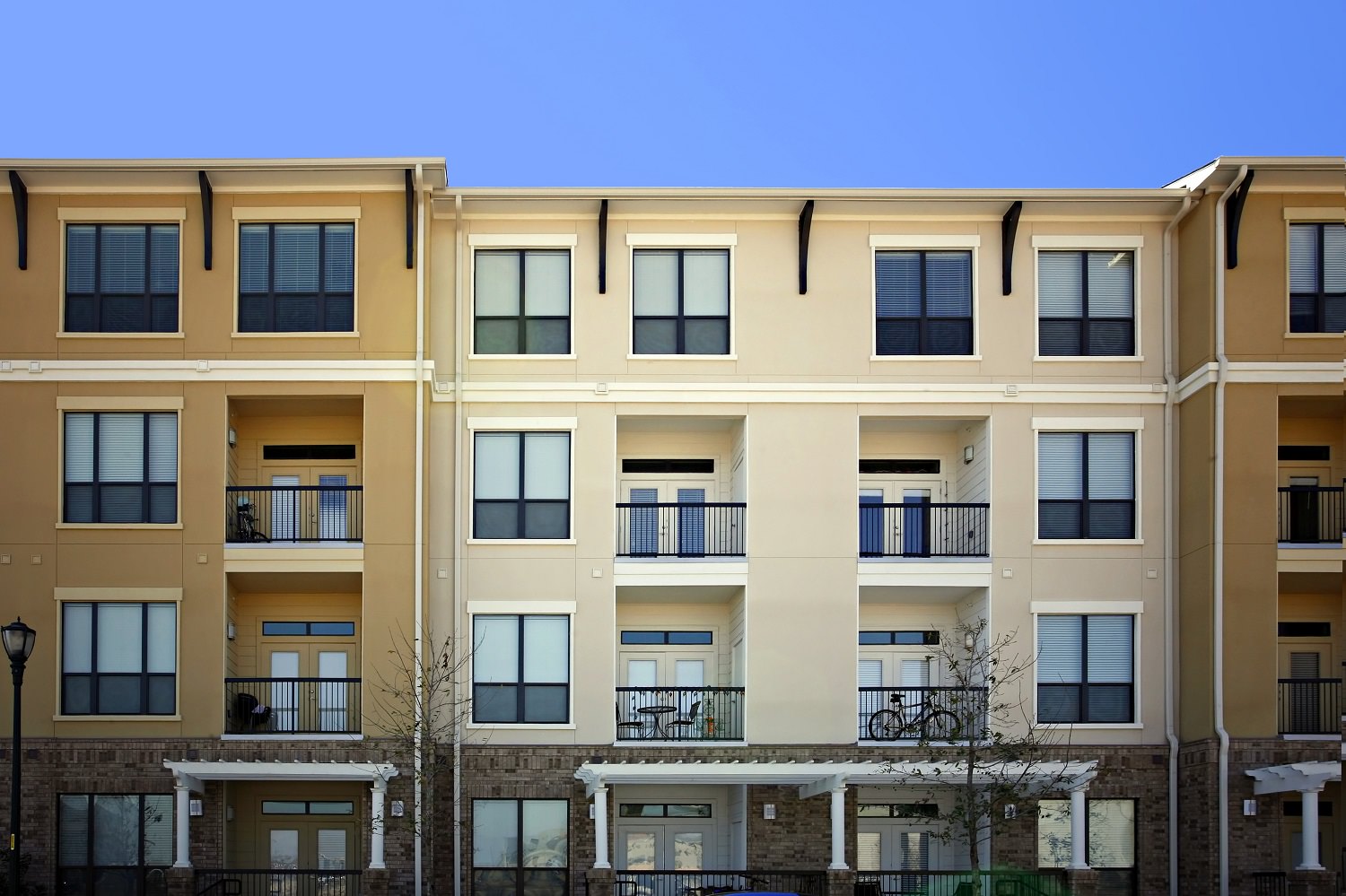 The volumes of sale of apartments and houses in Lithuania have also reached new heights, with this year’s figures being the highest since 2007. According to data from the State Enterprise Centre of Registers, in Q3 2016, the number of transactions of apartments in Lithuania was 10% higher and the number of transactions for houses was nearly 4% higher compared to Q3 2015. In Q1–Q3 2016, an average of 2,745 transactions for apartments and 815 transactions for houses were concluded in Lithuania. Figures exceeding these ones were for last time recorded in 2007, when an average of 3,006 apartments and 1,009 houses were purchased in Lithuania per month.
The volumes of sale of apartments and houses in Lithuania have also reached new heights, with this year’s figures being the highest since 2007. According to data from the State Enterprise Centre of Registers, in Q3 2016, the number of transactions of apartments in Lithuania was 10% higher and the number of transactions for houses was nearly 4% higher compared to Q3 2015. In Q1–Q3 2016, an average of 2,745 transactions for apartments and 815 transactions for houses were concluded in Lithuania. Figures exceeding these ones were for last time recorded in 2007, when an average of 3,006 apartments and 1,009 houses were purchased in Lithuania per month.
 The growing activity in the housing market has resulted in further growth of housing prices in the main Lithuanian cities. According to data from Ober-Haus, in Q3 2016, the overall growth of apartment prices in the five main Lithuanian cities was 1.1%. The fastest growth in prices in Q3 2016 was recorded in Vilnius, where apartment prices grew on average by 1.7% (to 1,399 EUR/sqm). The following figures were recorded for the other cities: 0.5% in Kaunas (to 975 EUR/sqm), 0.2% in Klaipėda (to 1,004 EUR/sqm), 0.8% in Šiauliai (to 590 EUR/sqm), and 0.9% in Panevėžys (to 552 EUR/sqm). Over the year, apartment prices increased by 6.0% in Vilnius, 3.6% in Kaunas, 2.4% in Klaipėda, 5.1% in Šiauliai, and 4.1% in Panevėžys. Similar trends were recorded in the apartment rental market. In Q3 2016, rents increased on average by 4.6% in Vilnius, 1.8% in Kaunas, and 2.7% in Klaipėda compared to Q3 2015.
The growing activity in the housing market has resulted in further growth of housing prices in the main Lithuanian cities. According to data from Ober-Haus, in Q3 2016, the overall growth of apartment prices in the five main Lithuanian cities was 1.1%. The fastest growth in prices in Q3 2016 was recorded in Vilnius, where apartment prices grew on average by 1.7% (to 1,399 EUR/sqm). The following figures were recorded for the other cities: 0.5% in Kaunas (to 975 EUR/sqm), 0.2% in Klaipėda (to 1,004 EUR/sqm), 0.8% in Šiauliai (to 590 EUR/sqm), and 0.9% in Panevėžys (to 552 EUR/sqm). Over the year, apartment prices increased by 6.0% in Vilnius, 3.6% in Kaunas, 2.4% in Klaipėda, 5.1% in Šiauliai, and 4.1% in Panevėžys. Similar trends were recorded in the apartment rental market. In Q3 2016, rents increased on average by 4.6% in Vilnius, 1.8% in Kaunas, and 2.7% in Klaipėda compared to Q3 2015.
The volumes of sales of new apartments in Vilnius, Kaunas and Klaipėda remain stable, while the development of new apartment buildings in Šiauliai and Panevėžys has virtually stopped (new apartments in just a few projects are currently being sold). According to data from Ober-Haus, in Q3 2016, 1,267 newly constructed apartments were purchased or booked directly from developers in apartment blocks under construction or those already completed in the five main Lithuanian cities. This figure is 11% lower than in Q2 2016 and 27% higher than in Q3 2015.
Changes in the supply of new housing are also observed in the market for detached and semi-detached houses: the increasing income of the population and the growing need for larger living area have recently encouraged developers to direct some of their investment into the development of houses. The most distinct changes are recorded in Vilnius. While 2012 and 2013 can be viewed as the start of the period of revival of construction of apartment buildings, activity in the market for houses has increased in 2014 and 2015. In 2016, developers plans to built approximately 360 new houses in Vilnius and its suburbs, which is a 67% increase compared to 2015. This is the best annual supply indicator since 2007, when nearly 490 new houses were supplied.
 If compared the development of house projects with the most active time period in 2007, we can see certain distinct differences. Today, developers present to the market a completely different product that reflects the current realities: a smaller living area for a lower final price. While in 2007 the average total area of houses built in Vilnius region was 186 sqm, this year the average area is 111 sqm, which is the lowest indicator for the past 15 years that will hardly change in the foreseeable future.
If compared the development of house projects with the most active time period in 2007, we can see certain distinct differences. Today, developers present to the market a completely different product that reflects the current realities: a smaller living area for a lower final price. While in 2007 the average total area of houses built in Vilnius region was 186 sqm, this year the average area is 111 sqm, which is the lowest indicator for the past 15 years that will hardly change in the foreseeable future.
Developers currently invest in the house projects of various size; the projects are dominated by row houses, i.e. attached houses with relatively small areas. While earlier a typical project consisted of detached houses and semi-detached houses connected by means of garages, today developers normally offer long aisles of attached row houses, which normally do not have indoor parking facilities. Parking spaces are normally provided outside or under sheds of houses. Yet the total area of houses decreases not only on the account of garages but also in terms of living area: it is now normal to design houses with a living area of approximately 80– 100 sqm, and sometimes you can even find row houses with an area under 60 sqm.
Developers want to satisfy buyers who wish to have their own home away from the city noise and closer to nature, with a minimum number of neighbours, a separate entrance and a plot of land. Attached houses with a smaller area enable satisfying these wishes at least to some extent and, what is most important, to provide housing for a considerably lower price. Buyers who prefer this type of houses are normally bound to not only accept a smaller living area but also a fairly small plot of land. Analysis of projects of Vilnius developers of 2016 shows that in most cases houses are built on plots of land with an area of 200 to 400 sqm.
In projects with a high construction density dominated by row houses, the area of plots of land can be 150–180 sqm, which means that the ownership and use of an own plot of land is implemented only formally if these projects do not create areas for common use (children playgrounds, sports grounds, etc.). The supply of detached or semi-detached houses with plots of land exceeding 600 sqm is very limited. Of the 19 house projects or stages to be completed in Vilnius this year, only 4 projects will offer houses with plots of land of a larger area (over 600 sqm).
Current housing development trends enable developers to offer their product to an increasingly large number of buyers. A smaller area of houses and plots of land means a lower acquisition price – a factor that remains an important criterion for buyers. Small (up to 100–120 sqm) houses without fit-out in Vilnius and its suburbs currently sell for EUR 80,000–120,000. Larger houses with an attractive location and partial finish are normally offered for EUR 140,000–170,000. If the pace of implementation of projects is considered, it becomes evident that developers have managed to adapt to the market needs and supply liquid products. To date, two thirds (66%) of the houses completed this year or to be completed by the end of the year in Vilnius and its suburbs have been either sold or booked.
The Ober-Haus Lithuanian apartment price index (OHBI), which records changes in apartment prices in the five major Lithuanian cities (Vilnius, Kaunas, Klaipėda, Šiauliai and Panevėžys), increased by 0.3% in September 2016. The annual apartment price growth in the major cities of Lithuania was 4.8% (the annual apartment price growth in August 2016 was 4.7%).
In September 2016 apartment prices in the capital grew 0.5% with the average price per square meter reaching EUR 1,399 (+6 EUR/sqm). During a year the prices of apartments in Vilnius increased by 6.0% and since the last lowest price level recorded in May 2010 prices have increased by 21.2% (+245 EUR/sqm). Apartment prices in Kaunas, Klaipėda Šiauliai and Panevėžys in September grew by 0.2%, 0.1%, 0.1% and 0.7% respectively with the average price per square meter reaching EUR 975 (+2 EUR/sqm), EUR 1.004 (+1 EUR/sqm), EUR 590 (+1 EUR/sqm) and EUR 552 (+4 EUR/sqm).
In the past 12 months, the prices of apartments grew in all major cities: 6.0% in Vilnius, 3.6% in Kaunas, 2.4% in Klaipėda, 5.1% in Šiauliai and 4.1% in Panevėžys.
“According to data from the State Enterprise Centre of Registers, nearly 1,140 contracts of purchase and sale of apartments were registered in Vilnius in September 2016, which is the second highest monthly indicator throughout the entire period of Lithuania’s independence after March 2007 (when over 1,260 contracts were registered). It is evident that the high September figure was due to the number of new apartment buildings being constructed and the contracts of purchase and sale concluded for them. The September statistics are not a momentous activity leap only: throughout all the months of 2016, a very high number of contracts for apartments was recorded in Vilnius. The total number of contracts for apartments concluded in the first nine months of 2016 was 14.5% higher compared to the same period in 2015 and only 7% lower compared to the same period in 2007 when the highest number of contracts for apartments was recorded. The total numbers of contracts for apartments this year in Kaunas and Klaipėda were, respectively, 11% and 30% lower compared to the same period in 2007. On the other hand, the greatest numbers of contracts for apartments in Šiauliai and Panevėžys were recorded in 2004; compared to 2004, this year the number of contracts in Šiauliai is 20% lower and in Panevėžys – 34% lower,” says Saulius Vagonis, Head of Valuation & Analysis at Ober-Haus.
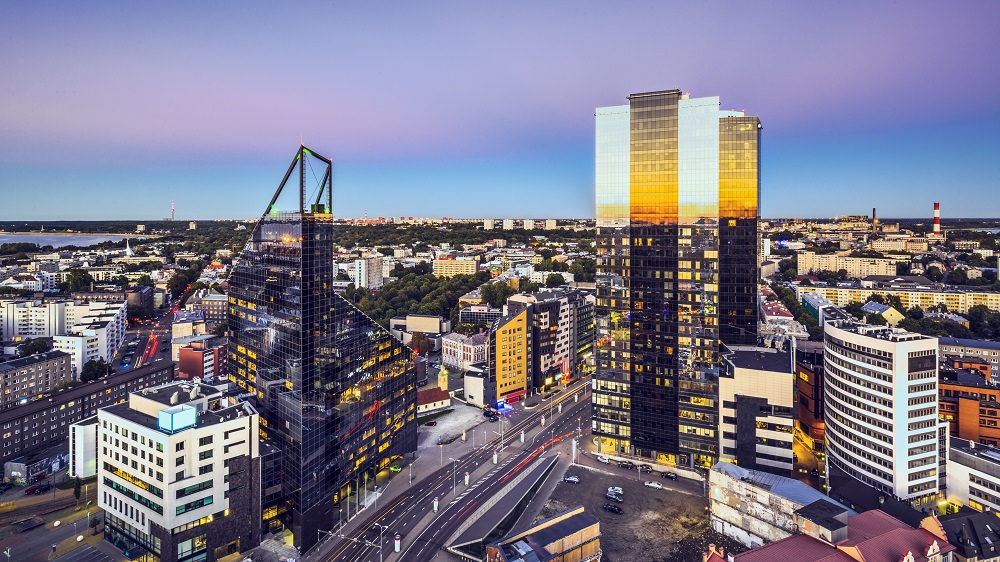 „Ober-Haus“ Lietuvos butų kainų indekso (OHBI), fiksuojančio butų kainų pokyčius penkiuose didžiausiuose Lietuvos miestuose
„Ober-Haus“ Lietuvos butų kainų indekso (OHBI), fiksuojančio butų kainų pokyčius penkiuose didžiausiuose Lietuvos miestuose
The Ober-Haus Lithuanian apartment price index (OHBI), which records changes in apartment prices in the five major Lithuanian cities (Vilnius, Kaunas, Klaipėda, Šiauliai and Panevėžys), increased by 0.4% in August 2016. The annual apartment price growth in the major cities of Lithuania was 4.7% (the annual apartment price growth in July 2016 was 4.8%).
In August 2016 apartment prices in the capital grew 0.7% with the average price per square meter reaching EUR 1,393 (+10 EUR/sqm). During a year the prices of apartments in Vilnius increased by 5.8% and since the last lowest price level recorded in May 2010 prices have increased by 20.7% (+239 EUR/sqm). Apartment prices in Kaunas, Klaipėda and Panevėžys in August grew by 0.2%, 0.1% and 0.2% respectively with the average price per square meter reaching EUR 973 (+2 EUR/sqm), EUR 1.003 and EUR 548 (+1 EUR/sqm). In Šiauliai apartment prices remained stable and were the same as in last month – 589 EUR/sqm.
In the past 12 months, the prices of apartments grew in all major cities: 5.8% in Vilnius, 3.4% in Kaunas, 2.3% in Klaipėda, 5.4% in Šiauliai and 3.5% in Panevėžys.
Apartment prices in Vilnius increased by 0.7% to 1,393 EUR/sqm in August 2016. During a year apartment prices in Vilnius increased by 5.8% and since the last lowest price level in May 2010, apartment prices are higher by 20.7% (by 239 EUR/sqm). In January-August 2016, the number of apartment transactions in Vilnius (6,891 transactions) increased by 13.3% compared with January-August 2015.
In August 2016, apartment prices in Riga increased by 1.0% to the average price of 1,123 EUR/sqm. Over the past 12 months, the average apartment price has increased 6.8% (in July 2016, the annual increase of apartment prices was 5.9%). In total there were 6,258 apartment transactions in January-August 2016 in Riga, which is almost 19.8% more than in the same period of 2015.
The average apartment price in Tallinn decreased by 1.5% to 1,638 EUR/sqm in August 2016. Over the past 12 months, the average apartment price has increased 4.3%. In total there were 5,870 apartment transactions in January-August 2016 in Tallinn, which is 3.2% more than in January-August 2015.
‘The growth in apartment prices intensifies both in Vilnius and Riga. The annual growth in the prices in the Estonian capital, Tallinn, is the slowest among the three Baltic States. Over the past 12 months, housing prices in Vilnius and Riga grew, respectively, by 5.8% and 6.8%; the growth in Tallinn was only 4.3%. The slowdown of growth in prices in the Estonian capital has resulted from the fact that, over the past 5 years, the fastest growth in housing prices has been recorded in Tallinn, with the current price level in the city (1,638 Eur/m²) only slightly lower than the highest price recorded in 2007 (1,707 Eur/m²). Tallinn is ahead of Vilnius and Riga not only in terms of housing prices but also in terms of market activity. Over the first eight months of 2016, 13.4 contracts of purchase and sale of apartments were concluded per 1,000 Tallinn residents; this figure was 12.7 for Vilnius and 9.8 for Riga. Starting from 2008, the highest market activity indicators have been recorded in Tallinn nearly in all years, and a greater market activity in this time period was only recorded in Vilnius in 2014. The housing market activity in Riga remains on average 20–30% lower than that in Vilnius and Tallinn,’ said Saulius Vagonis, head of the Valuation and Market Research Department at Ober-Haus.
Lithuanian Apartment Price Index, August 2016
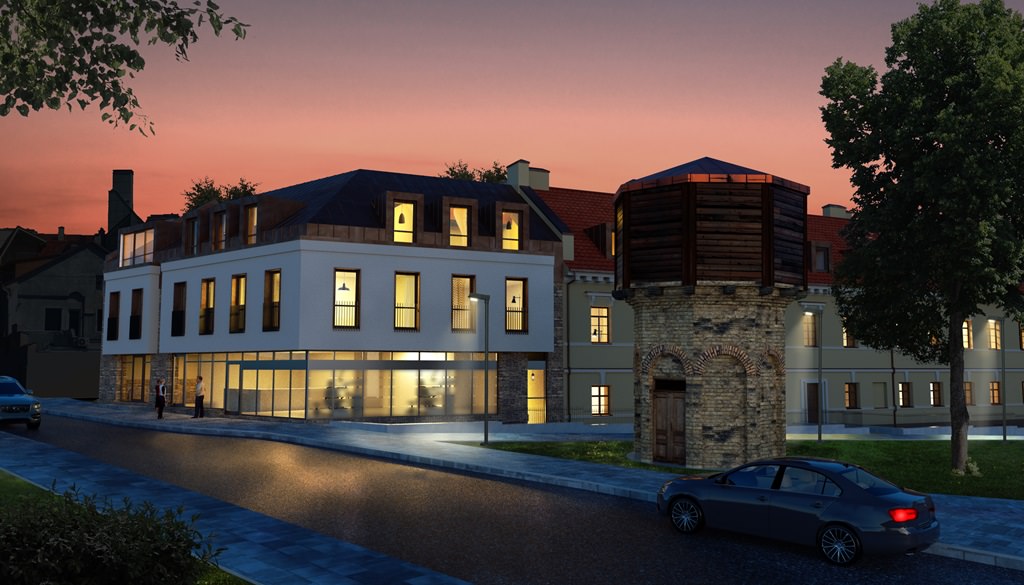
Many would be surprised to learn that a few decades ago Užupis was one of the most dangerous areas in Vilnius. Today, this bohemian oasis extending along the Vilnelė river has changed beyond recognition, a result of the renaissance of Užupis that started some ten years ago.
This revival of Užupis is associated first and foremost with the establishment of Vilnius Academy of Arts. The then rather shabby district of Užupis was attractive to art students who found cheap housing alternatives in the area. Over time communities of artists settled in Užupis, which improved the atmosphere of the area significantly. This culminated in the declaration of the Republic of Užupis, which meant that this part of the city became a vibrant creative district much like Montmartre in Paris or Christiania in Copenhagen.
Construction coincided with independence
Real estate experts, however, note that the second, or the external renaissance of Užupis started a few years after the unveiling of the sculpture of the Angel of Užupis in 2005. According to Audrius Šapoka, Head of the Housing Department of the Ober-Haus real estate company several projects were launched that year – they were very different in character, but all played a crucial role in the formation of the new face of Užupis.
‘One of the biggest projects was the one developed by Ramada at the junction of Krivių Street and Baltasis Lane. The modern new apartment block of over 100 apartments attracted new families. In the meantime, YIT Kausta was working on an exclusive project implemented in several stages at Krivių Street, where several 2-3 storey houses with attics were developed in a gated development. The third rather prominent project at the time was the construction of a residential house at Užupio St. 25 by Ginta ir partneriai,’ Mr Šapoka said.
However, he notes that the construction of new buildings has come to an end, and the reconstruction of old buildings has now started. This will preserve the original face and spirit of Užupis. According to Mr Šapoka, one such project is Užupio Vartai, developed by Lords LB Asset Management.
The Užupio Vartai project restored the original façade of the building from the Krivių street side. A light-coloured building maintains the face of the old Užupis, at the same time offering residents contemporary, modern residential housing. When designing the compound, the developers responded to the request of the Užupis community to build a three-, rather than four-storey buildings. In line with the old traditions, the architects left the boundaries of the park undefined, restored the original classicism style columns in the inner yard of the building, and uncovered the original frescos in some of the apartments’ says Šapoka.
Further expansion on the outskirts only
The Užupio Citadelė project next to the Angel of Užupis, and the Užupio Krantinės project on the site of the former clothing factory are taking a similar approach to Užupio Vartai. Mr Šapoka noted that the space for individual small new buildings in the central part of the prestigious area is shrinking, while there are numerous other buildings that need to be restored.
Mr Šapoka thus estimates that major expansion and development projects can be only anticipated in the peripheral sections of Užupis on sites earlier used by industry.
‘With less and less space left in the central part of Užupis, it is only natural that major new construction projects will take place on the outskirts of the area. Now it is this area that offers most space for new projects. The Užupio Krantinės project is being built on the site of the former Vilija sewing factory, and an even larger project is planned for the site of the Skytek factory,’ forecasts Mr Šapoka.
At the Gazelė 2016 conference of Vilnius region on 8 September, real estate company Ober-Haus was awarded the Gazelė 2015 Award – it was recognised as one of the most successful and fastest-growing companies in Lithuania.
‘A unique organisational culture, two economic crises successfully survived by the company, and 17 years work experience create a very sustainable competitive advantage so that annual growth is becoming an integral part of the company’s operations’, Remigijus Pleteras, director general of Ober-Haus, said.
The award was established by Verslo Žinios. A company of any form of ownership can be nominated; it must have been established by not later than 2012 and its turnover must have increased by at least 20% for the past 4 years. However, growth is not the only criterion for nomination, transparency and publicity are also important and the company must pay all statutory taxes and observe the principles of good practice in its daily activities.
Ober-Haus, which has operated in Lithuania since 1998, currently has 10 offices (in Vilnius, Kaunas, Klaipėda, Palanga, Šiauliai, Panevėžys and Druskininkai) and employs more than 130 real estate experts.
Realia Group, the largest service provider in real estate management and brokerage services in the Nordic countries has acquired a Finnish real estate management company Corbel. The acquisition is part of Realia Group’s growth strategy and supports Realia Group’s plan to expand its real estate management services and to work as a pioneer in real estate management and real estate brokerage services. The Nordic private equity fund Valedo Partners Fund I AB has sold Corbel Holding Oy to Realia Group. The sale and purchase agreement was signed on August 31, 2016.
Realia Group brings together a broad spectrum of competencies in real estate management and real estate brokerage services in Finland and the Baltic countries. Operations are conducted through the subsidiaries Realia Isännöinti, Realia Management, Huoneistokeskus, Huoneistomarkkinointi, and SKV Kiinteistönvälitys in Finland, and Ober-Haus Real Estate Advisors in Baltic countries.
Corbel, founded in 2008, provides services in property management and corporate real estate management serving both domestic and international property investors, user-owners and tenants in Finland. Service offering includes property management, financial management, professional services as well as property asset management provided on a country-wide basis through 12 offices in major Finnish cities. Corbel employs approximately 190 people in Finland.
”Corbel complements in an excellent way Realia Group’s real estate management business and expertise. The acquisition is part of our growth strategy and supports our plan to expand our real estate management services. I strongly believe that the acquisition strengthens our competitiveness as a provider of real estate management services. I am looking forward to working together with Corbel,” says Matti Bergendahl, CEO of Realia Group.
”Under ownership of Valedo, Corbel has been developed since 2011, and the company has very well strengthened in all business areas. We are very happy that Corbel now joins forces with Realia Group,” says Sampsa Ratia, CEO of Corbel.
 In Q2 2016, increase in office supply has been recorded even in Klaipėda – construction of M19 business centre with total area of 2,000 sqm on Minijos Street was completed. This is the second office building by Stemma Management offered to the office market in Klaipėda over the past few years (at the end of 2014, this developer completed a small project, Liepų Offices, in the centre of Klaipėda). Following the completion of the project, the total usable office area of modern offices in Klaipėda increased to 64,900 sqm. Despite the tenants’ interest in new office projects (e.g. most of M19 business centre has already been let), previously built business centres are not particularly attractive and the total vacancy rate remains very high. At the end of Q2 2016, the vacancy rate of modern office space was 18.7%, whereas office rents remained same as at the end of Q1 2016 – B class office rents ranged from 6.0 to 9.0 EUR/sqm and A class – 8.5–12.5 EUR/sqm.
In Q2 2016, increase in office supply has been recorded even in Klaipėda – construction of M19 business centre with total area of 2,000 sqm on Minijos Street was completed. This is the second office building by Stemma Management offered to the office market in Klaipėda over the past few years (at the end of 2014, this developer completed a small project, Liepų Offices, in the centre of Klaipėda). Following the completion of the project, the total usable office area of modern offices in Klaipėda increased to 64,900 sqm. Despite the tenants’ interest in new office projects (e.g. most of M19 business centre has already been let), previously built business centres are not particularly attractive and the total vacancy rate remains very high. At the end of Q2 2016, the vacancy rate of modern office space was 18.7%, whereas office rents remained same as at the end of Q1 2016 – B class office rents ranged from 6.0 to 9.0 EUR/sqm and A class – 8.5–12.5 EUR/sqm.
At the same time the office market in Kaunas is gaining momentum. So far, investors in Kaunas have focused on the development of small administrative buildings and have been slowly getting ready for larger projects. At the beginning of 2016, reconstruction of one administrative building (Neris Business Centre) was completed, but completion of the construction of another five projects (on Vytauto Avenue, Taikos Avenue, Pramonės Avenue, Partizanų Street and Savanorių Avenue) is scheduled in the second half of the year and will offer modern office premises to tenants. In total, the office market in Kaunas will gain 11,300 sqm of office space in 2016. In mid-2016, the total usable office area of modern offices in Kaunas was 91,300 sqm.
An even greater leap in the supply of office premises in Kaunas is planned for the period 2017–2018, when considerably larger business centres will be offered to the market. To sum up the intent of developers, during the next few years at least 6-7 new projects currently at various stages of completion (from already started construction/ reconstruction to approval/design stage) could be implemented in Kaunas. These are projects, which are already being developed and planned on Jonavos Street, Vytauto Avenue, Karaliaus Mindaugo Avenue, K. Donelaičio Steet, K. Baršausko Street and Savanorių Avenue, could offer to the market in total up to 30,000 sqm of modern offices. This would be a really great impetus to the development of the offices market in Kaunas, since at the moment potential larger tenants have almost no choice. The vacancy rate of modern offices in Kaunas in mid-2016 was only 2.1% or 2,000 sqm. Changes in office rents are also conducive to the development of new projects. Although the increase in rents is not significant (during the first half of the year rents for office space in Kaunas increased on average by 5%), this is an extra incentive to developers. Currently B class office premises are renting for 6.0-10.0 EUR/sqm and A class – for 10.5-13.0 EUR/sqm in Kaunas.
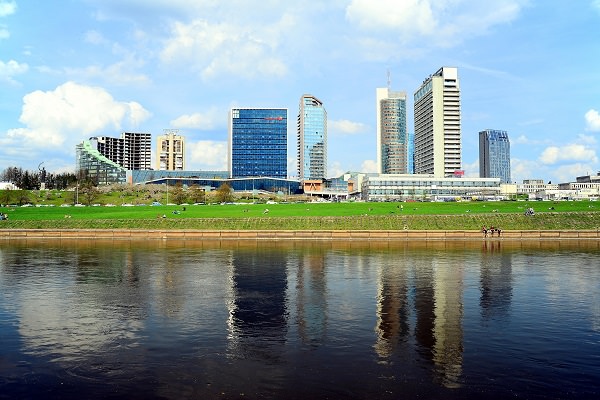 The second half of this year promise abundant developments in the office market in Vilnius. All six projects in progress (Quadrum, CITY, 135, Green Hall 2, HIGHWAY and Delta) will be completed offering 82,600 sqm of office space. Since no new business centres were opened in the first half of the year, the vacancy rate in Vilnius business centres decreased to 3.5% totalling 19,000 sqm at the end of Q2. Developers declare they will offer another 69,200 sqm of modern office space across 13 different projects (on V. Gerulaičio Street, Saltoniškių Street, T. Narbuto Street, Lvovo Street, Naugarduko Street, P. Baublio Street, Liepyno Street, Mozūriškių Street, Verkių Street, Viršuliškių Lane, and Kareivių Street) in Vilnius in 2017. Since the great majority of these projects are actually in the construction phase, it is likely that they will be implemented and in 2016–2017 we will have the same impressive volumes of development of office space as it was in 2008–2009.
The second half of this year promise abundant developments in the office market in Vilnius. All six projects in progress (Quadrum, CITY, 135, Green Hall 2, HIGHWAY and Delta) will be completed offering 82,600 sqm of office space. Since no new business centres were opened in the first half of the year, the vacancy rate in Vilnius business centres decreased to 3.5% totalling 19,000 sqm at the end of Q2. Developers declare they will offer another 69,200 sqm of modern office space across 13 different projects (on V. Gerulaičio Street, Saltoniškių Street, T. Narbuto Street, Lvovo Street, Naugarduko Street, P. Baublio Street, Liepyno Street, Mozūriškių Street, Verkių Street, Viršuliškių Lane, and Kareivių Street) in Vilnius in 2017. Since the great majority of these projects are actually in the construction phase, it is likely that they will be implemented and in 2016–2017 we will have the same impressive volumes of development of office space as it was in 2008–2009.
Particularly rapid development of offices eight years ago coincided with the start of the global financial crisis and resulted in the leap of the vacancy rate to 10% at the end of 2008. At the end of 2009, the vacancy rate was almost 18% and rents in 2009 dropped by 40%. Repetition of such scenario in the present economic and market conditions is unlikely. Sustainable economic growth of the country and increasing attractiveness of the capital city to investors (arrival and expansion of international companies) has up to now determined a sufficiently smooth realisation of new office building projects and allows to expect that on the day of opening of newly built business centres, the vast majority of premises will also be let. It should also be noted that some part of the buildings and its premises is developed for own use and builders or companies related to them will move from old premises to newly built ones. Therefore a leap in the vacancy rate is not expected this year, however, starting from the second half of 2016, a moderate increase in the vacancy rate will be observed.
Competition between business centres in Vilnius has been sufficiently strong recently and this is attested by stable rents, which have not essentially changed since the end of 2015. Currently B class office premises are renting for 8.5–13.0 EUR/sqm and A class – for 13.5–16.5 EUR/sqm. Compared to the lowest rents in 2010, rents for office space in Vilnius have on average increased by over 40%. It can be said that the current and planned supply and demand ratio has determined the office rental market peak and it is unlikely that during the next few years rents could considerably increase.
Lithuania Commercial Market Commentary Q2 2016
 Investor appetite for commercial property in the Baltic states continues to grow rapidly. The first half of 2016 was particularly successful for both the buyers and sellers of modern commercial property. A total of 22 investment transactions were concluded during this period in Lithuania, Latvia and Estonia, as a result of which 423,000 sqm of modern commercial property (offices, retail, warehousing and industrial buildings and premises) was purchased. The total value of the acquired properties amounted to EUR 436 million, which was 11% more than during the first half of 2015.
Investor appetite for commercial property in the Baltic states continues to grow rapidly. The first half of 2016 was particularly successful for both the buyers and sellers of modern commercial property. A total of 22 investment transactions were concluded during this period in Lithuania, Latvia and Estonia, as a result of which 423,000 sqm of modern commercial property (offices, retail, warehousing and industrial buildings and premises) was purchased. The total value of the acquired properties amounted to EUR 436 million, which was 11% more than during the first half of 2015.
Latvia, which was for a long time lagging behind Estonia and Lithuania, is in the lead this year. The total investment in commercial real estate in Latvia over the period reached EUR 220 million or almost 51% of all investment in the Baltic states. In the main this is due to two large investment transactions in Riga involving acquisition of the shopping centres Domina and Riga Plaza totalling EUR 168 million. In Estonia, investment transactions amounted to EUR 126 million or almost 29% of all investment in the Baltic states. The largest investment transactions in Estonia were recorded in the retail premises sector involving the purchase of two shopping centres Mustamae Keskus and Magistral in Tallinn. With the total value of acquisitions amounting to EUR 90 million, investment amounts in Lithuania during the first half of this year were the smallest. The largest single transaction in Lithuania was the acquisition of the remaining part of the shares from the developer of Nordika shopping centre in mid-2016. At the end of 2015, the Estonian company Zenith Capital Management already acquired half of the shares of management company of Nordika. One of the most interesting transactions in the Baltic states was reported in March 2016 where Laurus, a joint venture of Partners Group and Northern Horizon Capital, acquired 40 different commercial units across the Baltic countries (mainly current or former units of SEB bank) from the Dutch company Geneba. In 2014, Geneba took over the major portion of the real estate portfolio in the Baltic states managed since 2007 by Homburg Invest.
The scope of investment in the Baltic states per real estate segments shows that retail property has been most popular this year. According to data from Ober-Haus, out of EUR 436 million invested in Lithuania, Latvia and Estonia, 59% was investment into the retail property sector. Investment in offices accounted for 31% of total investment and investment in warehousing and industrial traditionally accounted for the smallest (10%) portion of total investment. The largest transaction in the latter sector was reported in June where the Estonian EfTEN Real Estate Fund III acquired three logistics centres in Vilnius, Riga and Tallinn from DSV, the international transport and logistics services group.
“Evaluation of investment in this year and previous years shows that the commercial real estate in the Baltic states continues to be of interest only to local and Scandinavian capital investors. Investors from other regions are mostly companies, which are not directly related to real estate, or larger investment funds, which acquire large international real estate portfolios and as a result sometimes take over properties in the Baltic states,” said Saulius Vagonis, head of the Valuation & Analysis Department at Ober-Haus. For example, in 2015, the fund of the US asset management company Blackstone acquired a high value real estate portfolio in Scandinavian countries, including three shopping centres in Riga. Despite individual larger investors arriving directly to the markets of the Baltic states, statistics has for a long time shown a steady trend. According to calculations from Ober-Haus, over the first half of 2016, it was mostly funds of the Baltic states and private investors who invested in modern commercial real estate (47% of total investment). Scandinavian capital investors accounted for 19% of total investment and investors from other countries (Switzerland, Russia, Malta and etc.) accounted for the remaining 34% of total investment.
“It is likely that the second half of the year will remain sufficiently active in the investment transaction market. Despite growing expectations of property owners concerning the value of the property, buyers continue to be actively interested in and negotiate acquisition of different types of commercial property. The pending transactions, which, it seems, will be completed by the end of this year, are likely to yield most positive annual results in the Baltic states,” said S. Vagonis.

 Search
Search 
